Key Takeaways
- The University of Michigan's North Quadrangle Residential and Academic Complex was designed to foster experiential learning opportunities and encourage group engagement and student collaboration.
- Encouraged by university administrators, the North Quad working group held focus groups to give students a role in defining two key learning spaces.
- Although student needs dictated many programming decisions, the projects required and benefitted from both student and faculty input on technology, space use, and staffing.
Like many campuses today, the University of Michigan is committed to creating learning opportunities to help students discover how to take risks, to innovate and reinvent themselves, to welcome new situations, and to embrace diverse opinions. Guided by these goals, the university set out to create two unique learning spaces within the new North Quadrangle Residential and Academic Complex (North Quad).
The first building of its kind on Michigan's campus, North Quad combines a 450-bed residence hall with space housing three academic programs: the departments of Communication Studies and Screen Arts and Cultures (both from the College of Literature Science and Arts); and the School of Information. North Quad also houses two co-curricular units: the Sweetland Center for Writing and the Language Resource Center.
Recognizing the importance of providing formal and informal learning spaces throughout the complex, we the working group (of which we three were members) focused on creating shared or common spaces such as small group collaboration rooms, gallery and presentation spaces, studios, and informal performance and social spaces. These shared spaces are designed to be flexible and multi-purpose.
This article focuses on the development of two North Quad spaces: the Media Gateway, an interactive lounge; and Space 2435, a flexible, interactive learning space. Initially, our working group planned to focus primarily on technology, but a pivotal question about student involvement led us to hold focus groups to gather student input and expand our vision for the space. Embracing our students' voices helped us create spaces that further push the boundaries of learning by promoting interdisciplinary collaboration, providing technology-rich resources, and celebrating student work. We also realized early on the need for sufficient staffing support to implement and sustain this vision.
Initial Vision
The concept of shared spaces across multiple units was relatively new to our largely decentralized campus. Although most of us could easily imagine how the shared TV studio and dining hall could be scheduled and co-owned by the community, the Media Gateway and Space 2435 were the least defined and hardest to conceptualize.
As originally envisioned, the Media Gateway was to function much like a hotel lobby, in both physical and programmatic design. It was seen as a place where students, faculty, and staff could meet between classes and appointments. Focused on information sharing and collaboration, the space combined casual lounge seating with high-end technology. However, it was difficult to visualize how this space — which was physically located in the heart of the building — could become more than a utilitarian passageway from one place to another.
Less programmatically structured than the Media Gateway, Space 2435 was originally designated as space for an external retailer. After it became clear that the retail operation was not viable, university officials decided to move in another direction. So, with the rest of the building close to completion, we had a blank space requiring both programming and design.
A programming working group formed to articulate the vision for North Quad's shared spaces included faculty and staff members from among the building's future occupants, staff from the provost's office, and a librarian. Our group developed a set of programmatic goals and visions for the Media Gateway and Space 2435 (see table 1) focusing on seven key factors: immersion, literacy, creation, collaboration, connectivity, flexibility, and inclusion.
Table 1. Vision for the North Quad's Shared Spaces*
| Media Gateway Vision | Space 2435 Vision |
|---|---|
| The Media Gateway, with its more public spaces and alcoves, provides informal, spontaneous meeting points and sites for collaboration among students, or students and faculty, and is ideally suited for a more casual engagement with technology. Expected activities include small groups of students and/or instructors working together, students working on group assignments, students generating content to be displayed elsewhere in the building, and a place for collaborative activities. | The second floor collaborative space, by contrast to the Media Gateway, is planned as more scheduled and programmed space that will showcase a rich variety of content, such as student- and faculty-produced work, international news, films and documentaries, and interactive video walls. Sample activities include creating and displaying student projects, hosting design jams, displaying international news/documentaries/short films, interactive and real-time interaction with students studying abroad, and hosting performances, exhibits, and presentations. |
In this video (4:55 minutes) Professor Susan Douglas, chair of the Department of Communication Studies, talks about the planning for and use of the new North Quad spaces.
The group's full set of recommendations, which followed these vision statements, was submitted to the university's administration. Although the administrators complimented the plan, they asked a pivotal question: Where is the student voice?
Embracing the Student Voice
"Students were genuinely excited to provide input about the North Quad common spaces and enthusiastically shared a wide range of ideas."
—North Quad student focus group facilitators1
In response to administrative urging to incorporate student perspectives into our programming plan, we organized a series of focus groups to gather student feedback about the building's shared spaces.
Focus Groups: Recruitment and Structure
We sent e-mail invitations to key groups of student stakeholders promising pizza and the opportunity to influence the final designs for the new building. The focus group attendees ranged from sophomores to graduate students and represented a range of disciplines. Fortunately, the timing of the focus groups allowed the building's inaugural residents to participate. They were joined by students majoring in various areas including each of the academic units in the building. We conducted six focus groups, gathering feedback from nearly 80 students. In fact, so many students wanted to contribute their ideas that we had to turn some away.
Focus group facilitators, a mix of faculty and staff affiliated with North Quad, prepared a presentation for the students that provided an overview of North Quad's shared spaces as well as the driving concepts the faculty and staff programming working group had developed to frame their vision. The attendees also viewed images of a selection of engaged learning spaces on campus. The facilitators then led the students through a guided discussion that included events and activities the working group imagined might take place in North Quad's shared spaces, as well as physical elements such as built-in technology and furniture layouts. Students were asked to evaluate the feasibility of the proposed activities and spaces and to share their own ideas.
Results
Focus group facilitators took copious notes during the sessions and met later to synthesize the data into broad categories, featured in table 2. Surprisingly, students were less concerned with robust technology than the faculty and staff members of the programming group, who saw it as a major focus. Although the students' program ideas necessitated a sophisticated technological package to implement, in their focus group feedback students said they preferred to complete work on personal devices. They also requested quiet study spaces and low-tech accessories, such as whiteboards and markers, as well as spaces for high-energy, low-tech activities such as exercise classes.
Table 2. Focus Group Themes and Student Requests
| Themes | Specific Requests |
|---|---|
| Technology | Video conferencing, laptop projection, sound system, electrical outlets, connectivity, also want "low-tech" features |
| Programming | Design jams, film festivals, lectures, exhibits |
| Social learning | Space dedicated to learning within a social context |
| Purpose | Shared spaces that change purpose throughout the day/night, such as an academic space during traditional working hours, tutoring and support in the early evening, social study space at night, and activities such as dance troupe practice late at night |
| Flexibility | Flexible spaces, technology, scheduling, furniture |
| Expertise | Faculty and staff available to help design, plan, and advertise |
| Connection | Inform students without bombarding them with information; allow students to provide ongoing programmatic input |
The focus group results led us to increase our focus on creating flexible spaces and expanded our understanding of how the spaces would be used. The students understood that there would be a natural shift in activities from morning to afternoon, evening, and into the night that would make flexibility particularly important. They also emphasized the importance of including previously overlooked low-tech features. Finally, the vast range of activities the students imagined would take place made it clear that North Quad's shared spaces would require adequate staffing to support those activities.
Meeting Staffing Needs
"Lectures, exhibit space, video conferencing technology, dance festival… these are all great, but I have an idea for exhibiting my film and I want to have ongoing social media to share my ideas about the film and capture what other people think about my film. Who is going to help me make that happen?"
—Focus group attendee2
Outfitting the spaces with high-end technology gave some university administrators the notion that the spaces would run themselves with little need for staffing. However, when we interviewed faculty and staff about technology-rich, heavily programmed spaces elsewhere on campus, we repeatedly heard that such spaces function properly only with a dedicated staff to carry out the vision for the space.
Expectations articulated both in the faculty and staff programming report and in the student focus groups indicated that the shared spaces at North Quad would be home to many individualized programs. Someone would need to develop meaningful, rich programs connected to North Quad's mission for the spaces, while responding to daily needs regarding furniture, catering, lighting, sound, setup, teardown, promotion, and security.
Clearly, a single position was insufficient for a large, technology-rich environment; it would take the commitment and expertise of a right-sized staff to ensure the North Quad vision moved from individual concepts to fully developed and responsive programming. This was especially important given the students' array of programming ideas, which ranged from exercise classes to fashion shows and tutoring sessions. Table 3 shows the planned tasks and anticipated success factors for dedicated support staff.
Table 3. Support Staff Tasks and Success Factors
| Need for Staff | Factors for Success |
|---|---|
| Maintain technology | Demonstrate neutrality and joint ownership Foster collaboration among stakeholders |
| Schedule events | Work with units to set goals and identify work plans |
| Cultivate vision | Build trust as a foundation for successful programming |
The library, in addition to consulting for the programming group, had a proven track record for providing facilities and services to the entire campus community, especially in support of student learning. It therefore constituted a neutral party in the new building and a natural home base for the Programming Coordinator position. The programming group thus called on the library to provide an administrative home for a full-time Programming Coordinator.
Programming Coordinator
While it was clear the Media Gateway and Space 2435 would require adequate staffing for success, we did not envision staff members passively sitting at a desk. The shared spaces required a more active, engaged, and on-demand model of service. The Programming Coordinator would work with faculty, staff, and students throughout the program planning process, from idea generation to implementation. The Programming Coordinator would also be able to call on student employees for both project-based work and event staffing assistance.
The Programming Coordinator has several tasks, with the main role of engaging students throughout the creative and educational cycles of the new learning spaces. The Programming Coordinator also:
- conducts an ongoing assessment of programming and shared space usage (assessment being another area in which librarians excel);
- facilitates intersections between and among departments, while also drawing students into the process; and
- develops, manages, and presents innovative exhibits and programs designed to enrich the intellectual, educational, and cultural life of the University of Michigan campus through the North Quad facility.
Technology Coordinator
As we developed the Programming Coordinator role, it became apparent that the coordinator would not only have to effectively facilitate collaboration and programming between and among faculty, staff, and students but also properly maintain and encourage the use of North Quad's extensive technology. In addition to the already full workload planned for the Programming Coordinator, it was unlikely that a single staff member would have the skill set to ably tackle both roles, and so we created the full-time Technology Coordinator position. The Technology Coordinator serves as a steward for the complex systems in North Quad's shared spaces, from digital signage displays throughout the building to a rack of event equipment in Space 2435's AV Room. Beyond a maintenance and support role, the Technology Coordinator partners with the Programming Coordinator to help students, faculty, and staff broaden their understanding of how technology can play a role in the success of their events.
Early Experiences
In the nearly two years since North Quad welcomed its first students, faculty, and staff, programming has grown tremendously. In April 2012, Space 2435 — now the building's primary shared space — hosted 50 events, up from 21 the previous April.
The student focus group results have largely predicted the programming outcomes, from content to format to growth areas. Students repeatedly asked for flexibility, and the types of programs held in the space support that need, often over the course of a single day. In the mornings, classes might use Space 2435's screens for portfolio development work. Lunchtime might include a videoconference session, followed by a student film in the evening. Flexibility is required not only of the staff and physical space, but also of the technology. The screens must be adaptable enough to accommodate multiple inputs: VGA and HDMI cables for connecting student laptops in the morning, a resident computer streaming a webinar at noon, and a Blu Ray player to run the evening's film.
Technology Use
Actual technology use in the spaces is often a blend between what the programming group predicted students would find useful and what the focus group students said they would like to see. Although students emphasized the need for quiet study space and low-tech accessories, they took for granted the ability to draw program content from a variety of sources, as well as the physical infrastructure needed to transfer content on their personal devices to avenues for public consumption and display.
In this video (:28 seconds) 2011 graduate Kristen Williams explains how North Quad technology enabled her show.
The projects described in "Experiential Learning in North Quad" explain some of the many ways the space has been used. For example, one of the first groups to use the new space was the Global Scholars Program, a unique residential community within North Quad. The group booked Space 2435 for one of its monthly challenge activities. During this activity, the 60 participants were divided into groups, and each was assigned to investigate and perform a dance belonging to a particular culture. We were prepared for them to bring a stack of iPods and had an audio cable at the ready. The students surprised us, however, and in one evening used nearly every piece of technology we installed in the space. Although some of them did have iPods, they brought audio for their dance performances in an astonishing variety of media. They carted a stereo into the room and asked to connect it to the system, for example, and some of them wanted to use their laptops to find YouTube videos of the dances being performed and then project them onto our screens. Others requested a microphone.
The Programming Coordinator's Role in Practice
The Programming Coordinator not only schedules and guides the programming but also serves as a mentor to student groups performing their work in the spaces. Students and faculty often come to the space with a desired outcome in mind, such as a creative thesis presentation or a film premiere. The Programming Coordinator then works with the person to think about all aspects of a performance, from the room configuration to the flow of the event, bringing in the Technology Coordinator to consult on the use of the room's built-in equipment. It's not uncommon for students to anxiously occupy the AV room, awaiting the final render of a film on a portable hard drive before a screening can begin. Graduate students have been know to bring one version of a poster presentation for the screens, only to return moments before the session with a new, corrected version, desperate to make the change in time. Patient, understanding staff members ensure that students can fully utilize the space; they also guide students on the path to future presentations in their careers.
Throughout the first year, the Programming Coordinator's assessment helped us adjust the envisioned programming to suit the day-to-day realities. For example, the Media Gateway is a two-floor space with seven screens intended both for student collaboration and to display work — such as films — by students and teachers. However, the use of the Media Gateway for quiet and group study made the space inappropriate to fully appreciate films, which typically include sound and demand a viewer's full attention. The Programming Coordinator therefore worked with graduate students in the School of Information to reevaluate the types of media that could be displayed in the space, and the resulting gallery-like displays proved more compatible with the Media Gateway's environment. Figure 1 shows detail of the gallery display in the Media Gateway.
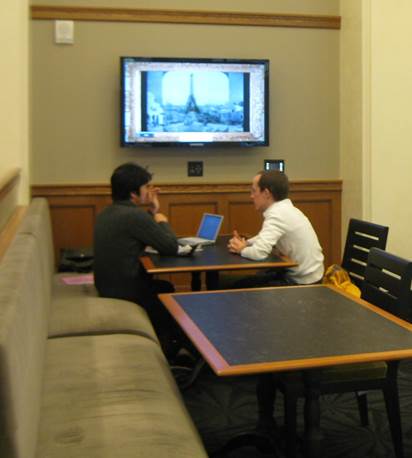
Figure 1. Media Gateway detail of gallery display
Key Strategies
Although North Quad is unquestionably a striking new building on campus, stepping through its doors quickly reveals much more: It is a reflection of students' needs for space that creates community, promotes knowledge creation, and celebrates learning. Experience with North Quad has demonstrated that the following strategies enable planning and successfully delivering next-generation learning spaces.
- Incorporate the student voice early in planning. Students expect to work in a creative, informal, technology-rich, and fluid learning atmosphere that combines expertise, technology, and resources. These types of environments create opportunities for fruitful, spontaneous encounters and innovative, interactive experiences. Understanding this expectation and building it directly into the planning phase yields a richer outcome.
- Facilitate ongoing assessment and student engagement. It is not enough to gather input at the front end of a programming experience. Providing a framework for ongoing dialogue sets expectations for innovation and creative learning. It also sends a message that students are active members of a community of learning beyond the classroom. Conversations, explorations, and feedback are essential to ensure that a space continues to stay at the leading edge and that these learning spaces become physical partners in students' academic work.
- Commit to learning by doing. Buzzwords and phrases such as flipped classroom, online learning, learning through activity, and educational technologies proliferate at conferences, in online discussions and the literature, and at faculty meetings. As we create new or renovate existing spaces, our challenge is to ensure that these spaces deliver the promises inherent in these new concepts and reaffirm a commitment to learning by doing.
- Embrace expertise, innovation, and technology. Technology can be a key to learning, but technology alone does not equate to learning. It is essential that faculty and staff frame an environment that lets students engage in the concept of learning by doing. Innovation does not happen without some failure and a commitment to trying new ideas.
Conclusion
Our results indicate that a synthesis of student, faculty, and staff feedback provided an excellent framework for designing the learning spaces of North Quad, developing a staffing model, and envisioning services and programming for the shared spaces. Although the student focus group results largely predicted programming outcomes, neither the faculty nor the students accurately predicted the needs for the space alone; it was only after bringing them together that we could make informed decisions about technology, space usage, and staffing.
We hope that our experience with North Quad can be useful in a broader context, and that other institutions will consider embracing the student voice in planning and designing new campus spaces. Additionally, our programming would not have been successful without a commitment to staffing the shared spaces; this largely rested on the involvement of the Library, which provided the expertise and neutrality needed to facilitate interdisciplinary collaboration, provide technology rich resources, and celebrate student work.
- Laurie Alexander et al., "North Quad Student Focus Groups — Summary Report," submitted to North Quad Executive Committee, January 2010.
- Ibid.
Experiential Learning in North Quad
"The openness of the room, the ability to configure it for multiple needs, and — most importantly — the ability for students to see their work on display in a gallery-like setting make 2435 a really wonderful place to hold class. Students always ask why we can't meet there for the whole course."
—Shelley Manis, Writing 100 Instructor1
As the following examples show, North Quad demonstrates how students, when given space and expertise, can take charge of their education in new and exciting ways.
Honors Thesis
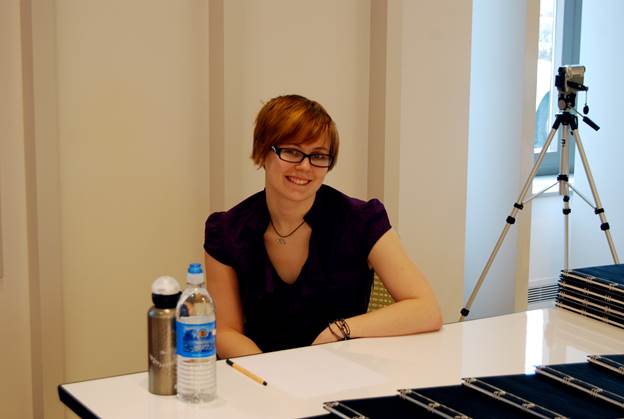
Figure 1. Kristen Williams at her Honors thesis presentation
Who: Kristen Williams, senior.
What: Williams came to North Quad's shared spaces with her Honors thesis, The Deadly Sins of a Techno Girl, a series of photographs and poetry reflecting on sexuality, technology, and feminism. In addition to having space to display her work, Williams wanted to hold a reception and reading, followed by a signing of the limited edition book she produced as part of her thesis project.
Learning outcome: Space 2435 helped Williams complete the circle with her thesis work. She had spent the year engaged in the process of creation, and exhibiting her work in North Quad helped her think about her work from a new perspective. It also let her present her work to an audience in a professional environment and model activities that she can use after graduation.
Why this space? It's hard to imagine another space on campus meeting Williams's needs. The Technology Coordinator worked with Williams to display her photographs and poetry on the space's six digital screens, while the Programming Coordinator helped her plan and stage the presentation and signing, which took advantage of Space 2435's built-in presentation equipment, including wireless microphones and HD projection. Her audience was small, and Space 2435 is right-sized to accommodate student presentations and activities that would be dwarfed by a large academic auditorium.
Student Film Premiere
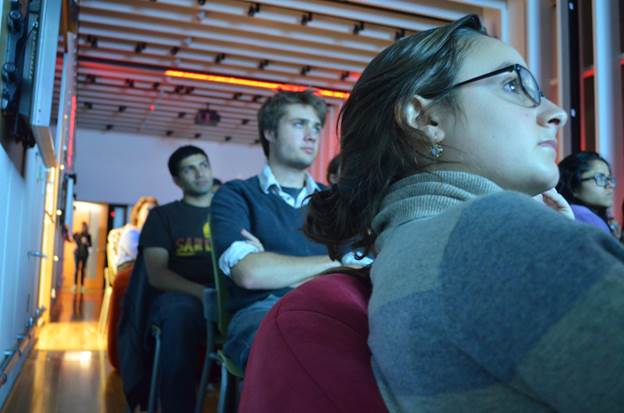
Figure 2. Opening night of the student film Jugaadoo
Who: Alex O'Dell, junior; Colin Packard, recent graduate of the Screen Arts and Cultures department; and Jonathan Kumar, senior.
What: Jugaadoo, a student documentary film, premiered in Space 2435. "Jugaadoo" comes from a Hindi word for improvisation. Kumar, one of the filmmakers, described the word as meaning "figuring out how not to say no." Kumar, O'Dell, and Packard worked on Jugaadoo while traveling in India, where they filmed inspiring vignettes featuring Indians engaged in changing the world around them.
Learning outcome: Representing the culmination of a summer of experiential learning, the students' film arrived in Space 2435 less than an hour before the program was to start, still on a hard drive in its unexported form. Once prepared for display, the film at first played without sound, and the students and the Technology Coordinator scrambled to correct the problem. Earlier, when guests began to arrive, the students had set up food from a local vendor; it then became clear that they had forgotten basics such as cups and plates. The event was thus a dual learning experience: the attendees, mostly undergraduate students, were able to view an excellent, informative film created by their fellow students. The student filmmakers, in turn, learned about the process of exhibiting a film and hosting an event for a large audience, on the fly, in real time.
Why this space? The event was an overwhelming success because of the space's physical and technological aspects, as well as its staffing. The Technology Coordinator and Programming Coordinator worked together to help the students put on their event, from the preliminary meetings and e-mail exchanges that guided the program's development to last-minute assistance with technical and programmatic issues. Space 2435's clear departure from typical classroom spaces elevated the event to what the students had imagined. Professional lighting, projection, and sound gave the film a polished presentation, while flexible furniture allowed the students to craft a unified physical environment to meet their needs.
School of Information Poster Session
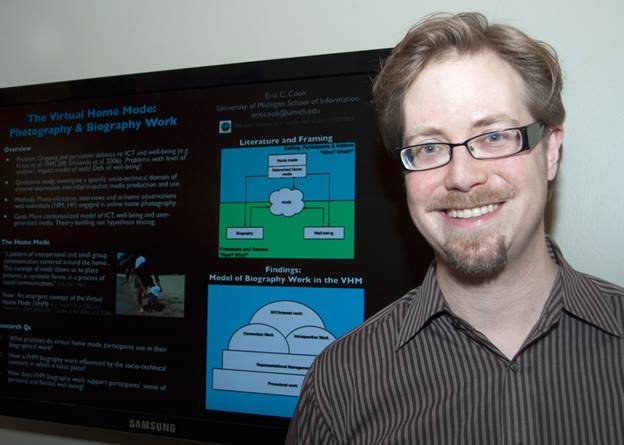
Figure 3. Eric Cook, former PhD student at the School of Information Poster Session
Who: PhD students from the School of Information.
What: Each fall, master's students are welcomed to the university's School of Information with a poster session featuring current PhD student projects. Because many of these projects are digital, they aren't well represented by traditional, two-dimensional posters. With the opening of North Quad in the fall of 2010, the School of Information (which resides in North Quad) has held this event in the building's Media Gateway, which is equipped with digital screens designed to display student work.
Learning outcome: New students are introduced to the School of Information's forward-thinking, digital culture immediately on arrival. Because of the space's technology, new students can engage with the projects in a way that embraces the functionality of the software, systems, and services that the PhD students are designing and studying.
Why this space? The Media Gateway's digital, flexible nature offers an ideal presentation of contemporary learning where posters reflect the fluid, dynamic nature of the projects they represent and allow for interaction and exploration.
Global Scholars Symposium

Figure 4. Members of the Global Scholars Program
Who: Undergraduate students in the Global Scholars Program, a residential living and learning community in North Quad.
What: The Global Scholars were among the first users of the Space 2435 when it opened. Their annual symposium brings together the program's students, faculty, and staff to discuss and reflect on the year's activities.
Learning outcome: Space 2435 allows for learning as well as for presentation; the latter is both creative and reflective, letting students learn from each other and discover new things about their own work as they discuss it with their peers.
Why this space? Space 2435's flexible physical environment supports programs that require transitions; in this case, participants were able to convene as a group, and then quickly rearrange the space to view student poster presentations on the digital screens throughout the room.
Writing 100
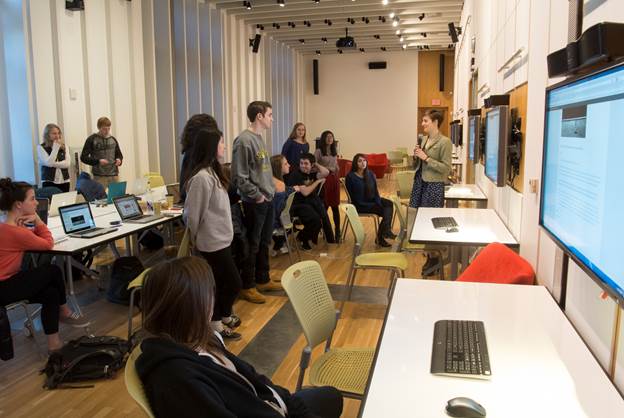
Photo courtesy of Breanna Hamm
Figure 5. The Writing 100 Class
Who: Sweetland Center for Writing lecturer Shelley Manis and her undergraduate students.
What: The Sweetland Center for Writing, located within North Quad, has embraced the need for students to learn how to write in a digital context. Students in Writing 100 not only draft papers, they also create online e-portfolios, which Manis introduces to her students in Space 2435's technology-rich environment. The students then return at the end of the semester for a showcase of their work on the space's digital screens.
Learning outcome: The initial class visit lets students learn the e-portfolio software in a conducive environment, as well as conceptualize the project in the context in which it will be presented and evaluated later.
Why this space? Space 2435's flexibility lets it function as both a learning and presentation space without the rigid structure of a traditional classroom. The students engage in passive learning on their first visit to the space, listening to a lecture that uses built-in presentation technology. On their second visit, they can create a gallery-style display in the same space. This transformation requires minimal effort on the part of the shared-space staff; as a result, the staff can focus their energy on an active, responsive partnership with the instructor.
- Shelley Manis, e-mail message to Jamie Vander Broek, 20 August 2012.
© 2013 Jamie Vander Broek, Laurie Alexander, and Stephanie Riegle. The text of this EDUCAUSE Review Online article is licensed under the Creative Commons Attribution-No derivative works 3.0 license.
